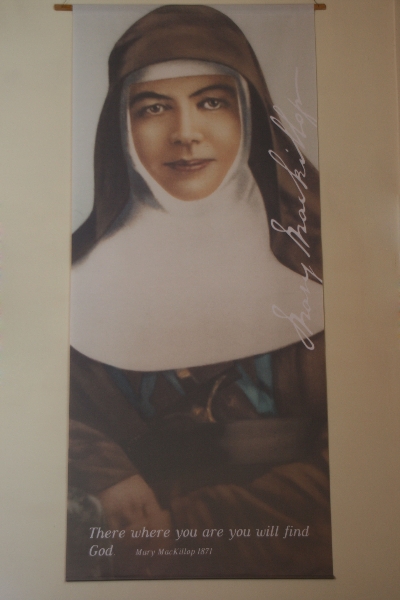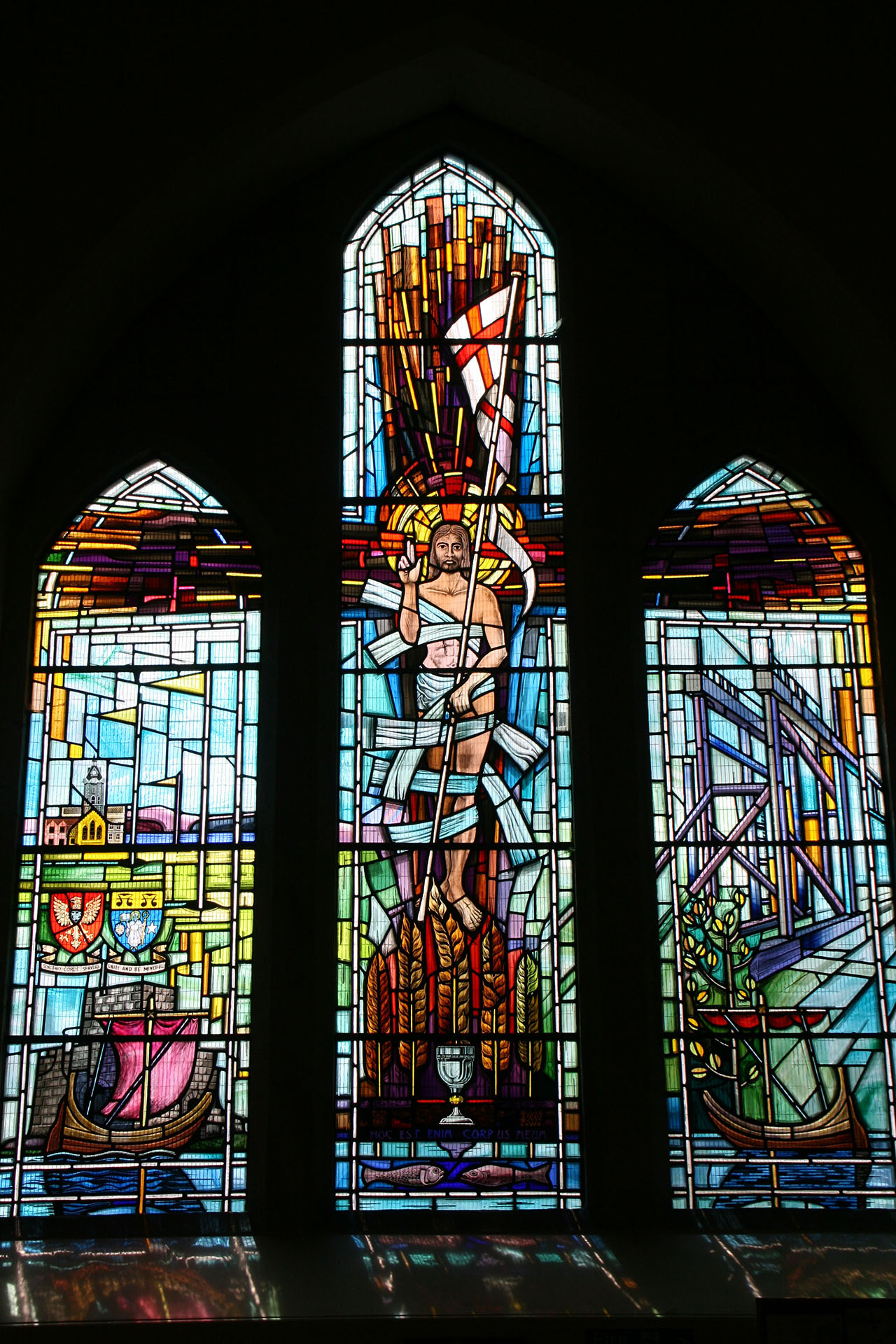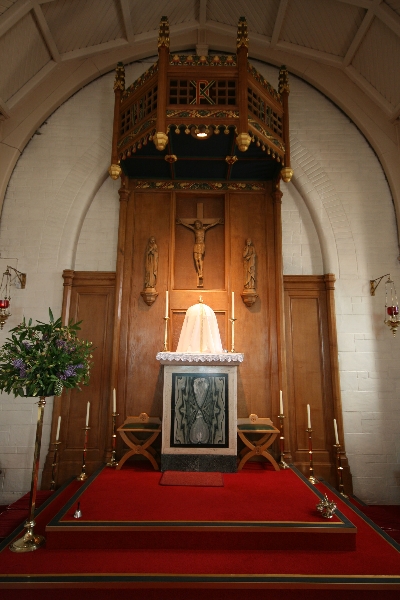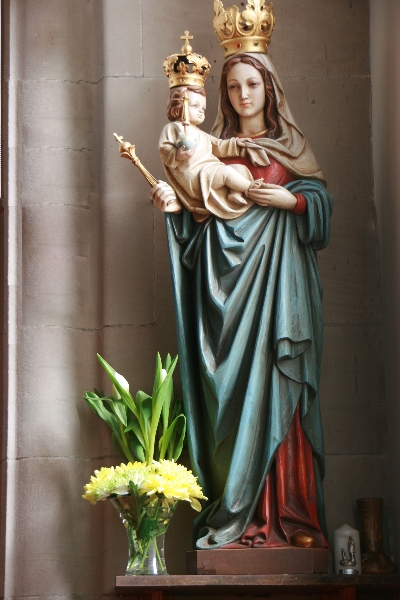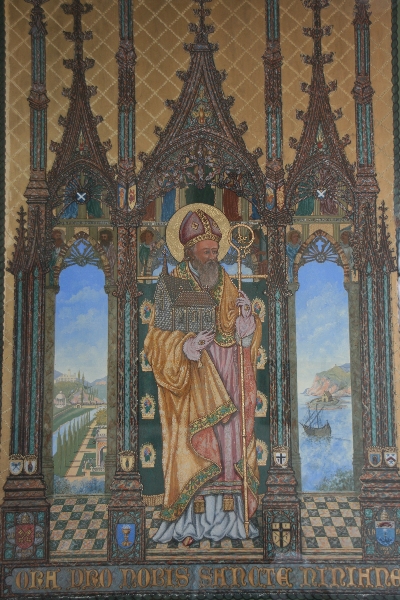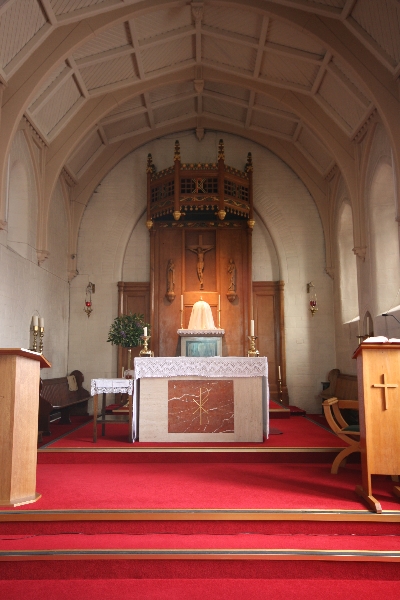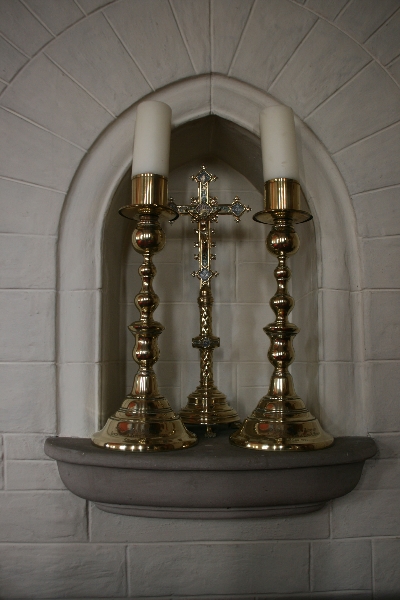Page Contents:
Mary Helen MacKillop was born in Fitzroy, Victoria, Melbourne Australia on 15th January 1842, the eldest of 8 children born to Scottish Catholic immigrants Flora (nee MacDonald) and Alexander MacKillop.
About her early years she writes “My life as a child was one of sorrow, my home when I had it, was a most unhappy one”. Much of this sorrow was due to dwindling family fortunes. Her father’s reckless business deals caused the family to lose their home and to become dependent on relatives. Although destitution was traumatic, through her mother’s influence, Mary learned to depend on the providence of God.
At 16, Mary became the main provider, working as a governess, then a shop assistant and finally a school teacher in Portland, Victoria. In 1866 she met the man who would change her life, Father Julian Tenison Woods. He invited her to teach in a new school in Penola, a small town in south east South Australia. This was to be a new type of school, a Church school where the education was free to all children. The success of the new school was immediate.
Soon Mary was joined by other dedicated young women and the Sisters of St Joseph was formed, the first Religious Order founded by an Australian. Dedicated to supplying a free education to all who needed it, small groups of the Sisters spread rapidly through the Australian landscape. They lived amongst the people who needed them, in tents, in shanties and sheds.
The more conservative Catholics were unsure of the vigorous new Order. Some of the Bishops found it impossible. The freshness of the vision and its practical interpretation were so unsettling to the rigid Church Hierarchy, that a terrible step was taken … Bishop Sheil of Adelaide declared that Mary was excommunicated and that the Order was disbanded.
It was at this point that friends from all parts of society banded together to support her in her days of crisis. And her friends came from all religions. Emanuel Soloman, a member of the Jewish faith gave the Sisters a place to live, Joanna Barr Smith a prominent Protestant, supported and encouraged them. Defying Church ruling, the Jesuit Fathers offered spiritual succour.
Justice prevailed and the excommunication was ruled invalid. The shattered Order regrouped and the work started again. This experience taught Mary that official Church approval of the Sisters was vital. She begged her passage to Rome and travelled dressed as a widow, as at that time the clergy and religious sisters were not well received in some countries.
Mary arrived in Rome on 11th May 1873, and presented the Constitutions for examination. She intended waiting in Rome for the investigation results but as the Italian Summer was seriously affecting her, she was advised to wait in a cooler country.
She left Rome on 1st August and travelled by train through Europe, staying where possible at convents, visiting schools and observing their teaching methods. She arrived in England on 13th August, staying in London in mainly rented rooms. She left London on 15th October, her journey taking her to Liverpool where she spent a week with the Notre Dame Sisters, visiting numerous schools as well as a Teachers’ Training College. She left Liverpool for Preston on 22nd October and from there took a train to Glasgow.
She toured around Scotland for almost three months, leaving her parents homeland on 21st January 1874. She arrived in Preston later the same day, leaving for Liverpool on the 22nd. She stayed a few days before catching the train to London on the 26th January. On 14th March Mary departed for Rome and arrived there on 17th March, immediately commencing her routine of visits to the authorities who were examining the Constitutions, even though she was frequently incapacitated by poor health.
After five weeks, Mary received the long awaited documents regarding the Congregation. At the Vatican, Pope Pius IX approved and blessed the Constitution of the Order. He also granted the group the right to determine its own direction. Mary left Rome on 24 April. She travelled back to London via Florence, Turin, Lyon, Paray-le Monial, Bordeaux and Paris, staying in each of these places visiting schools and interviewing young women with a view to their joining the order, whilst continuing her quest for priests willing to transfer to Adelaide.
On 1st June Mary arrived back in London. She went to Ireland on two separate occasions and spent a total of three months attempting to recruit priests for the Diocese of Adelaide and also seeking out prospective Sisters. Finally on 31st October 1874 Mary sailed from Plymouth, accompanied by fifteen young women who had left their Irish homeland and volunteered for a mission in an unknown, distant country, but sadly, no Priests.
On Christmas Day, after seventy one days at sea, Mary and her party arrived in Port Melbourne. They rested for several days and then set off for Adelaide, arriving 4th January 1875. She had been away from her beloved Sisters of St. Joseph and her family for twenty one months. Whilst she had not yet received the formal Decree of approval for the Order, she carried with her the affirmation from the authorities as well as he revised Constitution / Rule for the Sisters of St. Joseph.
Back in Australia, shelters for the elderly, the homeless and the neglected were opened. The new Josephite schools spread through the bush, the small farming communities, the railway camps and mining fields. Soon the Sisters travelled across the Tasman to open schools and missions in New Zealand.
In 1902, while visiting new Zealand, Mary had a stroke. Years of hardship, travel and anxiety had taken their toll on this remarkable woman. She died in Alma Cottage in Mary MacKillop Place, North Sydney on 8th August 1909. Her tomb is in the Memorial Chapel at Mary MacKillop Place.
Mary MacKillop’s life had been totally dedicated to showing God’s love and care for those in need. She was beatified by Pope John Paul II in Sydney in 1995 and canonised by Pope Benedict XVI in Rome on 17th October 2010.
Mary arrived in Inverness on the Caledonian Canal steamer on 13th December, and was welcomed by the parish priest Fr. William Dawson. Shortly after her arrival the Reverend Mother of the Franciscan Sisters came to take her to their Convent where she spent 2 days.
Father Dawson had purchased Mary a first class train ticket for Nairn and instructed a friend to see to her comfort. She arrived in Nairn 15th December, staying a day and a night.
During her earlier journey along the Caledonian Canal, on the 8th December, Fr. Alexander Forbes boarded the steamer, and invited Mary to visit his parish in Nairn, and tell him about her mission in Australia. He was the Highland priest whom she mentioned as befriending her during the Great Pilgrimage to Paray-le-Monial in France in September 1873.
She wrote to the Sisters in Australia
At one of the places en route a priest came on board, one whom I had met at the Pilgrimage. He recognised me at once and we had a long happy conversation upon the wonderful ways of Providence. He saw to all my needs, paid my expenses and …..on learning of her planned itinerary insisted very much that I should visit his church at Nairn, and tell him more about our mission.
Mary continued her letter…..
At Nairn, good Father Forbes was waiting to take me to his house, where I spent a happy day and night. He, like Father Bissett (of Stratherrick) had his church so sweetly clean and all so perfect about it; whilst in their houses and manner of living, they were so poor and simple but so clean. Father Forbes then saw me off to Aberdeen, first-class, and paid for it, for which I was so sorry, as he was so poor and could ill afford it.
From Nairn Mary travelled to Keith. It was an accidental stopover for Mary. The first class ticket purchased by Fr. Forbes in Nairn should have seen her travel through to Aberdeen, but due to some unrecorded reason, she found herself stranded overnight at the Keith railway station. Having spent that night in the waiting room at the Railway Station she left the next morning on the 6.00am train bound for her intended destination of Aberdeen.
1873
23 Oct Arrived Glasgow, Stayed at Franciscan Convent
24 Oct Left Glasgow. Spent the night in Oban
25 Oct Left Oban by steamer for Drimnin on Morvern Peninsula. Visited the Isle of Mull
8 Nov Left Drimnin for Fort William. Stayed at Invernevis House
19 Nov Left Invernevis House to visit the Braes. Spent a night at the Bunroy Chapel House
Ca 20–30 Nov Stayed at Keppoch House
23 Nov Visited relatives at Cranachan
Ca 30 Nov Returned to Fort William
Ca 8 Dec Left by steamer along the Caledonian Canal
Ca 8-12 Dec Spent three days at Fort Augustus
12-13 Dec Visited Stratherrick
13-15 Dec Caught steamer for Inverness. Stayed at Franciscan Convent
15-16 Dec Left Inverness. Spent a day and night at Nairn
16-17 Dec Left Nairn for Keith. Overnight delay at railway station
17-18 Dec Left Keith for Aberdeen. Stayed with Franciscan Sisters
18 Dec Left Aberdeen for Edinburgh. Stayed one month
1874
6-10 Jan Visited Uncle Archie MacKillop in Alloa
10 Jan Left Alloa and returned to Edinburgh
17 Jan Left Edinburgh for Glasgow. Stayed at Franciscan Convent
21 Jan Left Glasgow for Preston
Ever generous God,
You inspired Saint Mary MacKillop
To live her life faithful to the Gospel of Jesus Christ
And constant in bringing hope and encouragement
To those who were disheartened, lonely or needy.
With confidence in your generous providence
And joining with Saint Mary MacKillop
We ask that you grant our request……………….
We ask that our faith and hope be fired afresh by the Holy Spirit
So that we too, like Mary MacKillop, may live with courage, trust and openness.
Ever generous God hear our prayer.
We ask this through Jesus Christ.
Amen.
Reproduced by kind permission of The Sisters of St. Joseph
For further information please visit the Mary MacKillop Website: http://www.marymackillop.org.au/

